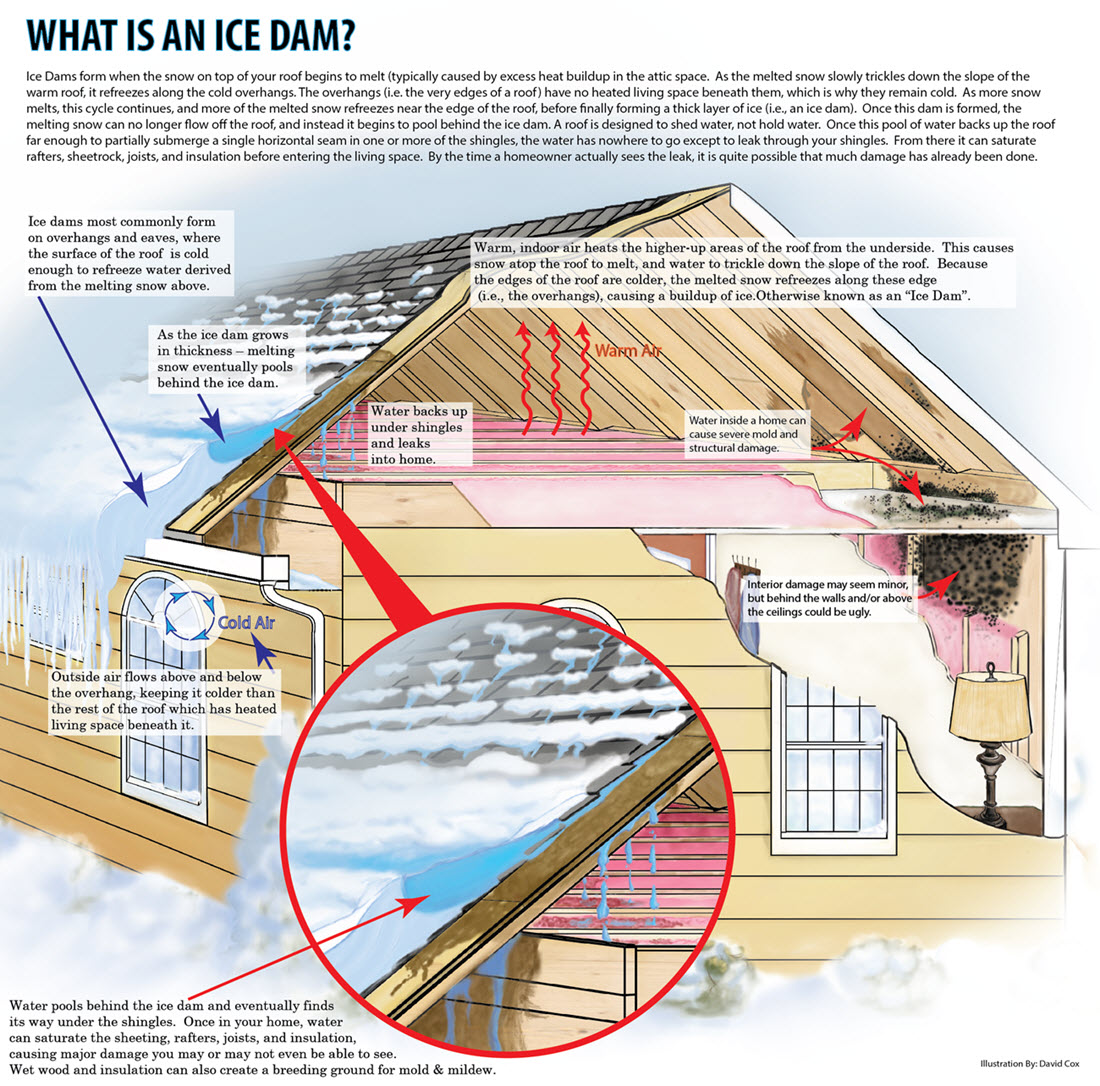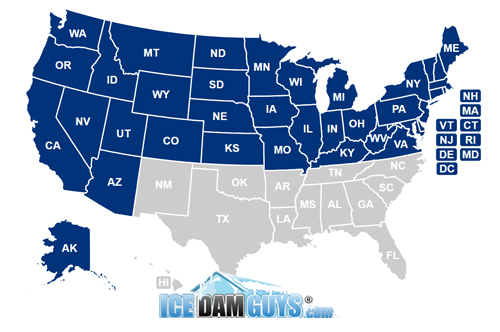Why Understanding Attic Bypasses is the Key to Preventing Ice Dams
Leaky attic bypasses are the single biggest reason some homes get ice dams. “Attic bypass” is sort of a jargon term, but it simply means any part of your home that might let warm air into your attic by means of “bypassing” the insulation.
Examples include attic hatches, wiring holes, plumbing vents, recessed lights, furnace & stove dampers, electrical outlets, switch plates, door and window frames, electrical and gas service-entrances, baseboards, weather stripping around doors or hatches, wall or window-mounted air conditioners, cable TV and phone-line entry points, dryer vent exhaust tubing, vents and fans, gaps around pipes and wires, and so on. In fact, any penetration through your walls or ceilings is a potential bypass.
It’s only natural that air can leak around these areas. You’ve cranked up your furnace and your house is toasty warm. That hot air is rising, and if it finds even a tiny crack, it’s slipping through. In fact it doesn’t always need a place you’d even think of as a crack, which is why so many people miss attic bypasses.

(click here to open the full-sized image in a new tab)
If you want to minimize your risk of getting ice dams, I recommend a two-step process:
1st-step: determine whether you have attic bypass problems. Nearly every home does, to some degree. Check the areas I mentioned a minute ago. If they don’t have airtight seals around them, or aren’t sealed-up with insulation, they’re probably leaky areas. If you can’t determine whether you have air leaks into your home and/or attic, skip to the next step anyway.
2nd step: call a professional out to seal up the leaky bypasses.
Why not just do it yourself? Although sealing a crack or gap with some caulking or insulation isn’t a hugely difficult task, it is important to know what’s going to be flammable, and where. You don’t want to insulate over an exhaust vent that’s supposed to vent or intake air. The last thing you want is to solve one problem only to create another, far more dangerous problem. Leave it to someone who does it every day.
How can you find out if you have attic bypass problems?
There’s an easy DIY trick that can help:
Go up into your attic. Turn on every light in your home, climb up into your attic, and close the hatch behind you. Stand still and look around. (Don’t drop your flashlight.)
Wherever you see light you can be confident that a lot of air is moving into your attic. Those little rays of light may look cool, but so do icicles, which you’ll find in abundance on the ice dams you’ll probably get if you don’t seal up those leaky areas in your attic.
Now, turn the lights on in your attic (or use a flashlight) and have a closer look at where you saw the light making its way into your attic. If you’re qualified to seal those air leaks, you should do so.
While you’re at it, have a good look around your attic space in general. Do you have fiberglass insulation? It’s typically yellow. If you see any black spots on it, there’s probably air moving through there. Your insulation is now acting like a filter. You’re seeing the residue of dirty air that has flowed through your insulation. If you go and lift up that bit of spotted or darkened insulation you’re almost certainly going to see something that needs to be sealed.
You might also return down to the top floor of your home and go hunting for cobwebs. Look for cobwebs where cobwebs shouldn’t be. Spiders make their webs where air is flowing because it helps to bring insects right into their web. (Those little guys are clever.) If you see cobwebs in places that have no visible air vents nearby, this can be a sign of an air leak you may have missed.
Your best bet – Regardless of whether you’ve found air leaks or not, you can (and should) have a professional come in and test for attic bypasses. They’ll do what’s called a “blower door test.”
They’ll open a single exterior door and seal it off with something called a blower door, which is just a temporary door with a built-in high-powered fan. Next, they will close all the windows in your house, open any interior doors, close all exterior doors, shut off any combustion appliances (furnace, stove, dryer, etc.), and close any stove flues that may be open.
Then they’ll begin the test, by turning on the blower door. The blower door will begin sucking air from inside your home, and expel that air outside. This will depressurize your home while your technician measures the amount of air leakage using a manometer (no, it’s not a way to measure how much Budweiser a person can swill during a football game). This test will determine how airtight your home is, and whether or not your home has excessive air leaks. If your airflow is too high then you’ll know that air is being sucked into your home from somewhere it shouldn’t be.
Also, by depressurizing your house, it can be easy to find air leaks with nothing more than your bare hand. Feel for air blowing out through outlets, light switches, etc.
Aside from being fun to watch, a blower door test can save you mucho dinero. Most home insulation professionals can do this test for you, or you can simply Google “home energy audit” or “blower door test” (in whatever city you live in).
Are there other reasons to worry about attic bypasses?
Yes. For one thing, they’re making your energy bills higher than needed. You’re paying to heat your attic and create ice dams that you’ll end up paying to get removed. In the warmer months you’re paying to air-condition the neighborhood cats and the raccoons that vandalize your garbage bags. That’s why sealing attic bypasses (and air leaks in general) is a major part of the Minnesota Energy Challenge.
Get a professional to get your air under control, and you probably won’t need to hire an ice dam company to get your ice dams under control.






















